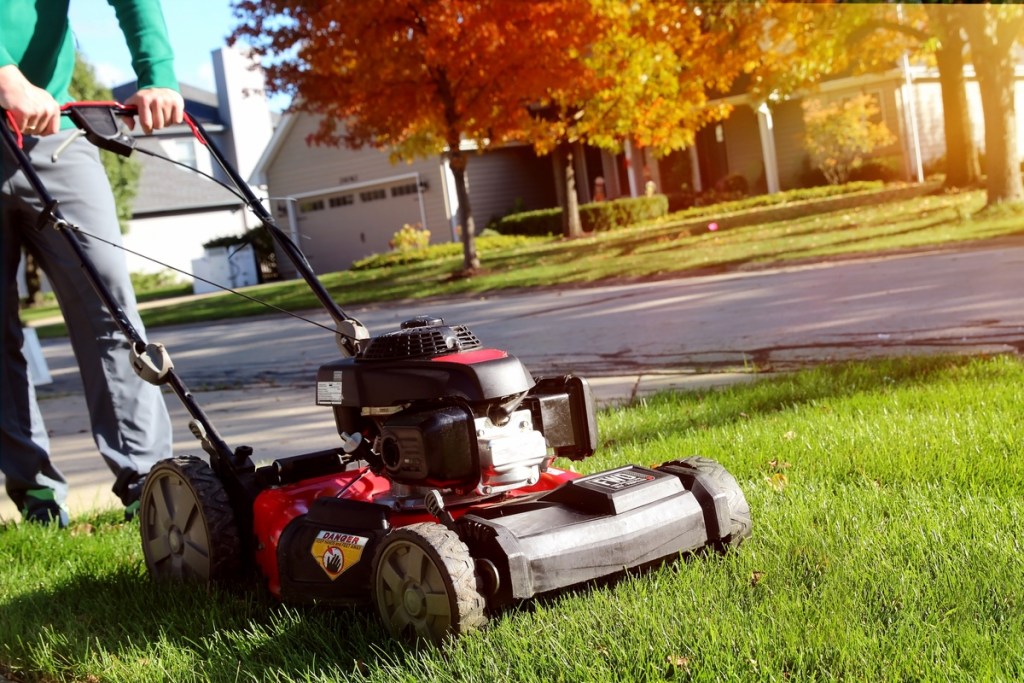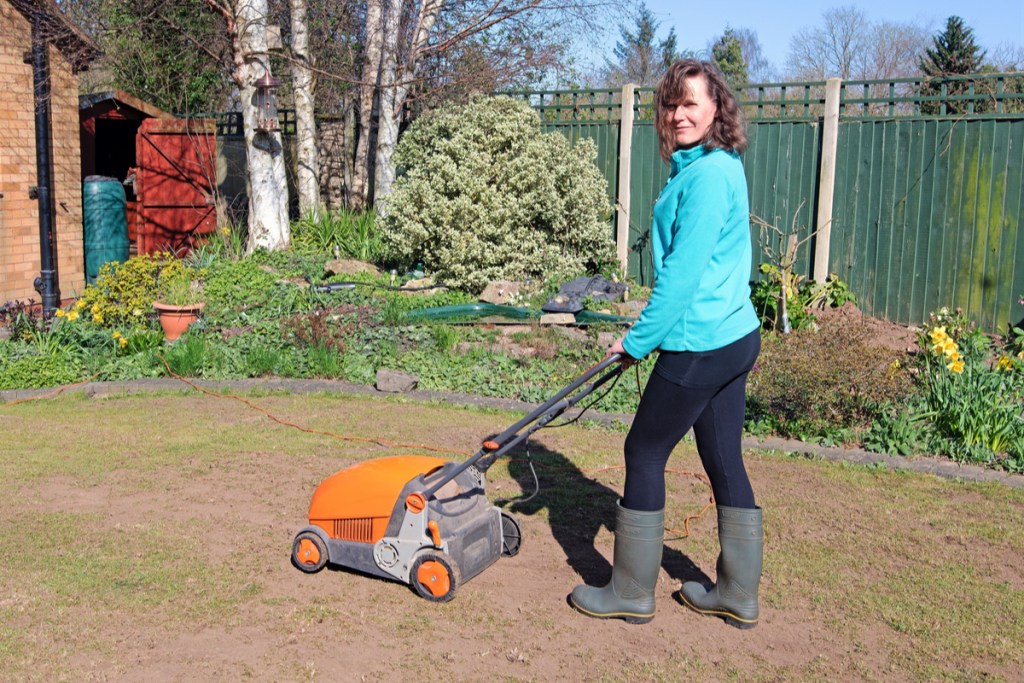As we bid a fond goodbye to lawn season and an uncertain hello to colder weather, it’s time to tuck in that trusty lawnmower for the winter. But if you want your lawnmower in tip-top shape and ready to go come spring, it does take a bit of work on the front end. Otherwise, you may not know quite what you’re going to get when it’s time to take your trusty lawn-care companion out of hibernation.
This is one of those instances when an ounce of prevention truly means a pound of cure. Here’s everything you need for the most effective lawn mower storage.

What’s the best way to store a lawnmower?
As with most anything, one size does not fit all when it comes to lawn mower storage. But there are some good rules of thumb. Generally speaking, the best way to store a lawnmower is indoors. Any indoor location will be preferred over any place outdoors, no matter how shielded it may seem from the elements. This goes double over those cold-weather months.
Can I store my lawnmower outside?
If outside is the only option, it’s still possible to winterize your lawnmower against the elements.
Make every effort to keep the lawnmower relatively dry, no matter where it is. If possible, keep the lawnmower above ground and place it under a tarp or a similar all-weather covering. Remember to keep the covering loose enough that air can flow through, which is essential in preventing mold and rust. You can also look for ways to get creative. For example, does your home or building have an overhang or an awning? Those can serve as valuable shelter for your lawnmower when harsh weather comes.
No matter whether you store it indoors or out, winterizing your lawn mower will help it run its best when the grass starts to grow again.

How do I winterize my lawnmower?
Winterizing your lawnmower will optimize its performance and extend its life, which is a key part of any good winter storage plan.
A large part of your winterization plan should depend on your lawn mower’s power source. For gas-powered motors, remove all fuel from the fuel tank. Run the engine until the tank is empty. For electric motors, charge and remove the battery.
Additional steps include:
- Turn the mower on its side and thoroughly clean the undercarriage. It needs to be clean, so turn up the hose and blast away those caked-on bits of sod and soil. A wash in warm, soapy water can also be helpful.
- Washing the exterior with soap and water is also a good idea.
- Give the engine a once-over, removing loose dirt and debris.
- Repair or replace any damaged parts.
- Tighten up loose nuts and bolts.
As always, consult your owner’s manual for other potential model-specific advice. Issues like lubrication protocols can vary substantially, while other fixes may require special tools or parts.

Can you put a lawnmower in storage?
Yes, most major self-storage facilities do accept small-engine equipment, which along with lawnmowers, can include items like jet skis, snowmobiles, motorcycles, and all-terrain vehicles.
But don’t think you can just roll the mower into the facility and close the door. Most self-storage facilities ask that users prepare their machine in much the same way one would for winterization — and in some cases, perhaps even more than what you had planned. For example, some self-storage facilities ask that small-engine items be covered while in storage.
The issue of indoors versus outdoors also arises for self-storage. If you consider your self-storage unit a second garage or shed, an outdoor or drive-up unit could make life more convenient. However, if you’re looking for maximum protection from temperature and humidity, a climate-controlled interior unit could be the way to go. Of course, before you store, check with each facility to learn more about their practices and policies.
Lawnmowers can be a significant financial investment, so it’s a good idea to extend their operating lives for as long as you can. The cold-weather months provide a brutal one-two punch of inactivity and the elements, which together can wreak havoc on even the most durable models. But never fear, because storing a lawnmower for the winter is by no means a complex undertaking. Just some time and a little effort will help you and your lawnmower hibernate the right way.
Editors' Recommendations
- Keep your yard happy all year with these 5 grasses that grow in the winter
- Are mulched leaves good for grass? Here’s how to mulch a lawn full of leaves this fall
- What is coconut soil, and how can it make your garden better?
- Push lawnmower vs. electric mower: Which one is best for you?
- What is buffalo grass, and should it be in your lawn?




